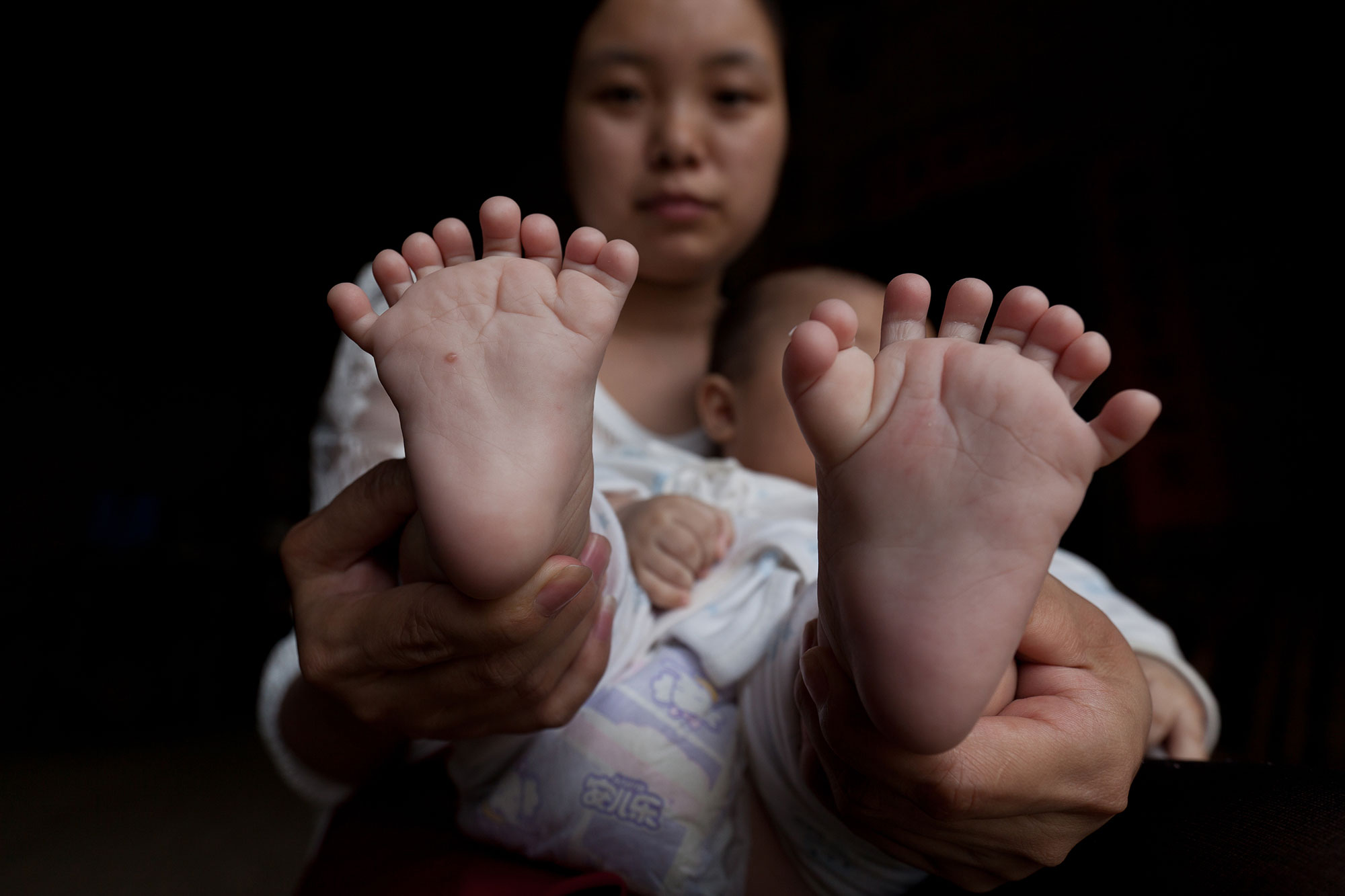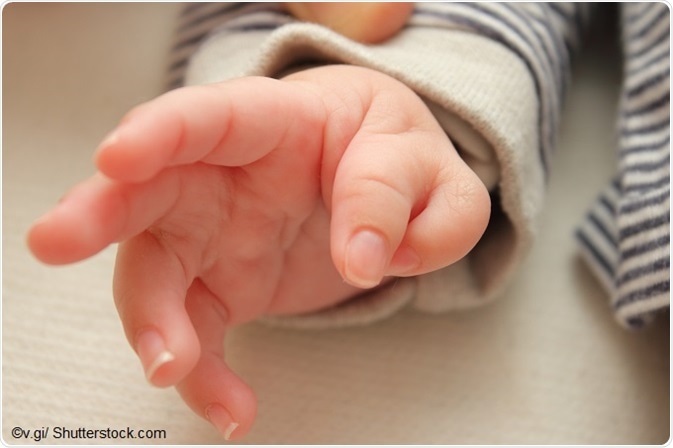is it common for babies to be born with extra fingers
Ulnar polydactyly or having an additional little finger on one or both hands is very common especially in certain ethnic groupsThis information sheet from Great Ormond Street Hospital GOSH explains about additional little fingers and how they can be corrected. Webbed fingers are usually separated with surgery and extra fingers can be surgically removed.
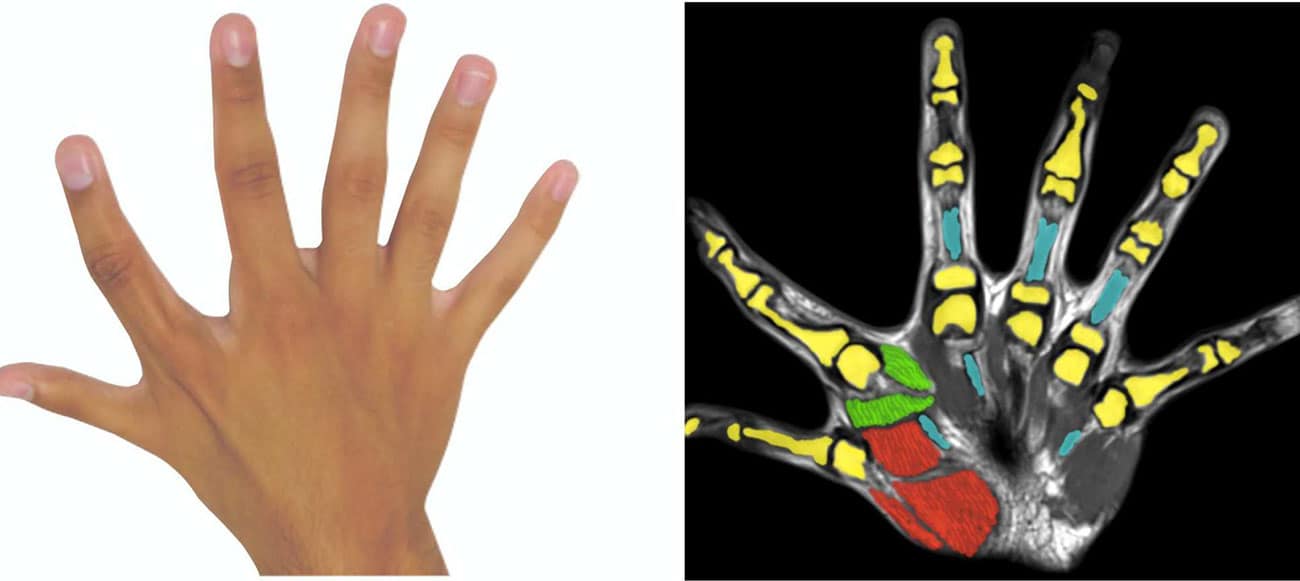
People Born With Extra Fingers Or Toes Requires Extra Brain S Resources Tech Explorist
Among ethnic groups there are differences in how often the extra finger is on the small finger or thumb side of the hand.

. The fontanels will eventually disappear as the skull bones close together usually in about 12 to 18 months for the front fontanel and in about 6 months for the one in back. Polydactyly usually is genetic runs in families. One out of every 1000 babies is born with extra fingers or toes for instance.
If the fingers are completely fused together it is considered complete. There are different types of polydactyly. Syndactyly is when 2 or more fingers are fused together.
About one out of every 500 to 1000 babies are born with the condition usually. Specific congenital hand differences include the following. All babies born with these problems should have a complete assessment by a hand specialist who treats these conditions.
Sometimes the remaining finger or thumb requires surgery for reconstruction. The term comes from the Greek words for many poly and digits dactylos. Polydactyly is the term for when someone has extra digits or fingers or toes.
Known as polydactyly the condition occurs genetically and can be inherited. There is a familial tendency to develop this deformity. Having a sixth finger has been considered lucky by astrology but science has a different take.
These extra digits are considered useless and usually amputated not long after birth - but as new research has shown they may not be quite so bad after all. Full extra stumped fingers were found on new born children For the other infants with extra fingers or toes a genetic mutation mixed-up of their genes controlling the digits formation happened. This involves fusion between only the tissues of the fingers.
And small hands with short fingers. Syndactyly is the most common congenital hand difference. Which are common in babies and toddlers with this defect.
A pediatric surgeon can remove the extra bone and skin and repair the tendons. Undergrowth or overgrowth of hand fingers andor thumb. Polydactyly is one of the most common congenital present at birth hand abnormalities.
It is a common condition that often runs in families. Some babies can have the extra finger fused. Also what causes a baby to be born with six fingers.
Involves having an extra thumb. Its when a baby is born with extra fingers or toes With polydactyly a congenital limb malformation the ten fingers ten toes delivery-room. Hexadactyly is a common condition in which the person is born with extra fingers in his hands or feet.
The most common symptoms of congenital limb differences include. Complete or partial absence of a limb such as fibula hemimelia or a partial or completely missing bone. This is perfectly normal.
Sometimes a child may need hand therapy. Usually an additional little finger is inherited with a 50 per cent or one in two chance of it happening. Polydactyly is a condition in which a baby is born with one or more extra fingers.
Involves having extra fingers on the opposite. The presence of a sixth finger referred to as polydactyly occurs in one in 3000 births. This condition happens to boys and girls equally.
Very rarely the extra finger is a fully functioning digit. It usually means that a baby is born with at least six fingers on one or both hands or six toes on one or both feet. A baby may be born with several extra fingers.
In medical terms having a sixth finger is just a birth defect which is usually harmless and does not need immediate treatment. The extra fingers or toes are described as supernumerary which means more than the normal number For this reason the condition is sometimes called supernumerary digit. By comparison amniotic band syndrome occurs in one out of every 10000 to 15000 births.
The word syndactyly is derived from the Greek syn which means together and daktylos which means digit finger or toe. More than 50 percent of children. Some people are born with extra fingers or toes.
In time after generations of developing growths on the bone were the wood handle caused pressure on subdermal bone growthsbumps were caused. A common method for removing extra fingers from newborns might cause the babies substantial pain and should be tossed out in. The vast majority of babies born in this country are healthy.
The presence of an extra sixth finger or toe a very common congenital malformation birth. Six fingers or toes. The most common type of this classification is syndactyly.
There are 2 types of syndactyly. Babies with more than five fingers or five toes have a condition known as polydactyly or many fingers Although this developmental condition sounds unusual it is one of the most common birth defects affecting the limbs such as the hands and feet. It is one of the most common malformations of the hand and can result in either a fully formed sixth digit or a small skin tag on the side of the hand.
An estimated one in every 7001000 babies is born with polydactyly which means they have extra fingers on their hands or extra toes on their feet or both. Its really not uncommon for human babies to be born with extra fingers or toes. Extra fingers or thumb.
It is estimated that polydactyly affects 1 out of every 500 to 1000 births. The mutation is called polydactyly and around one in 500 babies has it. In addition to looking elongated a newborns head may have a lump or two as a result of the trauma of delivery.
Some babies are born with extra fingers and toes but will have no other birth defects. It is more common in Caucasians. Most children with polydactyly are otherwise healthy.
The extra fingers are usually small and abnormally developed. Some babies may have isolated polydactyly without any genetic syndromes due to random changes during development while some may have coexisting genetic syndromes such as Patau syndrome or carpenter syndrome. Polydactyly on babies is a congenital condition when the babies are born with extra toes or fingers.
Polydactyly is a condition in which a person is born with extra fingers or toes.

Polydactyly Extra Fingers In Babies Causes And Treatment

Baby Born With 15 Fingers And 16 Toes Undergoes Surgery To Remove Extra Digits Mirror Online

Babies Born With Extra Fingers Are Treated With Risky Procedure Study Says

Extra Digits What Happens After Treatment Congenital Hand And Arm Differences Washington University In St Louis
/https://www.thestar.com/content/dam/thestar/life/2015/09/19/its-natural-but-an-extra-finger-will-still-draw-attention-ethically-speaking/polydactyly.jpg)
It S Natural But An Extra Finger Will Still Draw Attention Ethically Speaking The Star
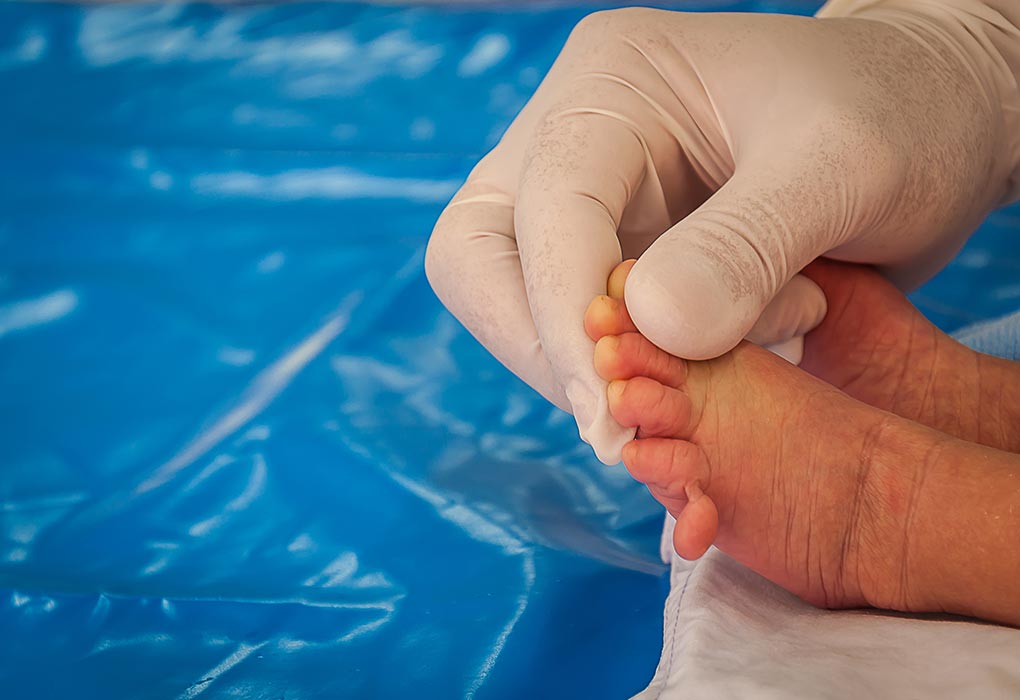
Babies Born With Extra Fingers And Toes Causes Treatment
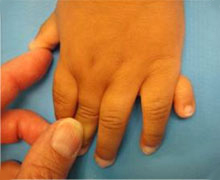
Polydactyly Seattle Children S
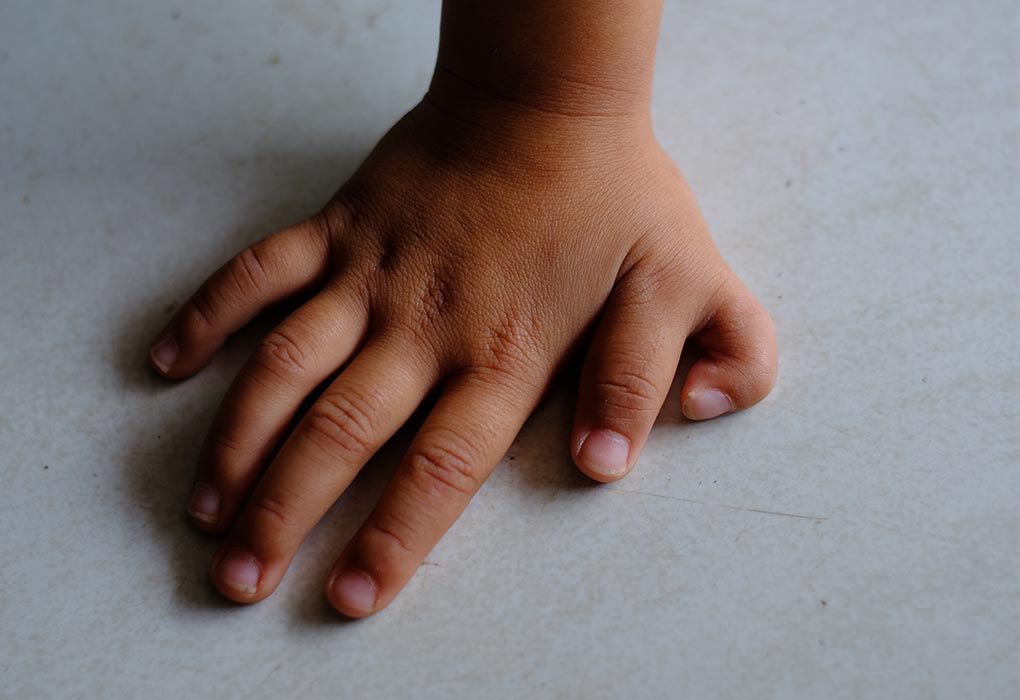
Babies Born With Extra Fingers And Toes Causes Treatment

Congenital Hand Deformities Mybiosource Learning Center

Extra Digits What Happens After Treatment Congenital Hand And Arm Differences Washington University In St Louis

Polydactyly Symptoms Causes And Treatments

Extra Digits What Happens After Treatment Congenital Hand And Arm Differences Washington University In St Louis

Webbing Of The Fingers Causes And Treatments
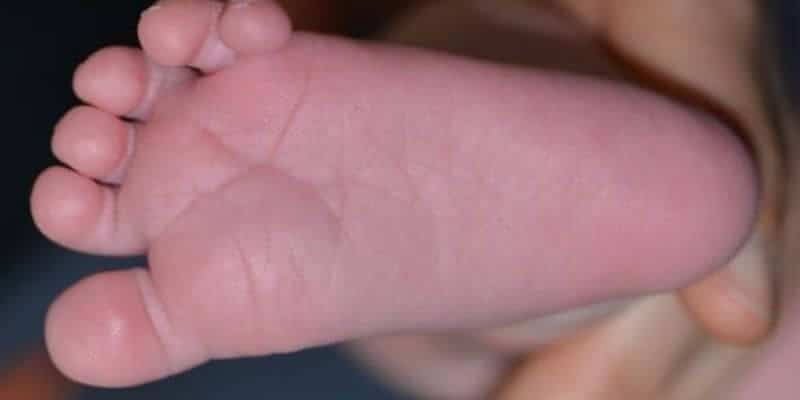
Being Born With Extra Toes Polydactylism

Baby Born With 15 Fingers And 16 Toes Undergoes Surgery To Remove Extra Digits Mirror Online

Extra Digits What Happens After Treatment Congenital Hand And Arm Differences Washington University In St Louis
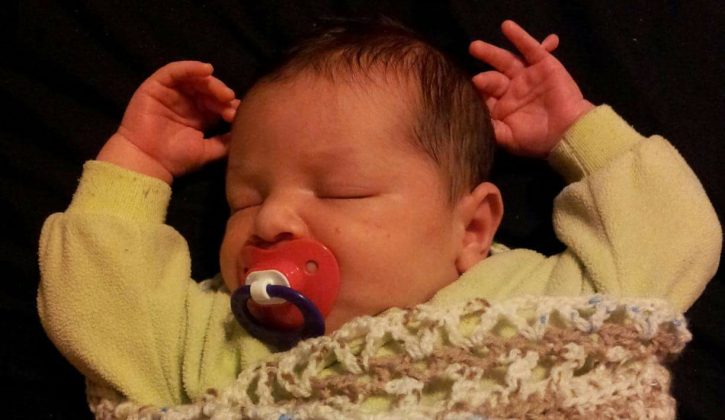
My Perfect Baby Was Born With Eleven Fingers Savvymom
